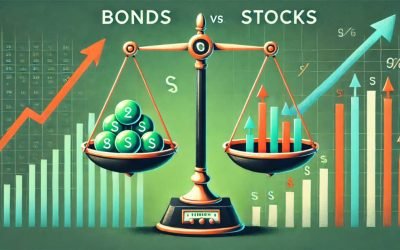Understanding the Basics of Dividend Investing
Building stable passive income streams with dividends is a strategy that has been embraced by many investors seeking financial independence. Dividends are payments made by a corporation to its shareholders, usually in the form of cash or additional shares. This article delves into the intricacies of dividend investing, providing a comprehensive guide to help you build a reliable source of passive income.
What Are Dividends?
Dividends represent a portion of a company’s earnings that are distributed to shareholders. They are typically paid out on a quarterly basis, although some companies may pay them annually or semi-annually. Dividends can be a powerful tool for generating passive income, especially when reinvested to purchase additional shares, thereby compounding returns over time.
Types of Dividends
There are several types of dividends that investors should be aware of:
- Cash Dividends: The most common type, paid in cash directly to shareholders.
- Stock Dividends: Paid in the form of additional shares of the company’s stock.
- Special Dividends: One-time payments made by a company, often due to exceptional profits.
- Preferred Dividends: Paid to holders of preferred stock, usually at a fixed rate.
Why Invest in Dividend Stocks?
Investing in dividend stocks offers several advantages that can contribute to a stable passive income stream:
Regular Income
One of the primary benefits of dividend stocks is the regular income they provide. Unlike growth stocks, which may not pay dividends, dividend stocks offer a steady stream of income that can be particularly valuable during retirement or periods of market volatility.
Potential for Capital Appreciation
In addition to providing regular income, dividend stocks also have the potential for capital appreciation. Companies that pay dividends are often well-established and financially stable, which can lead to long-term growth in the value of their shares.
Tax Advantages
In many jurisdictions, dividends are taxed at a lower rate than regular income. This can make dividend investing a tax-efficient way to generate passive income.
Inflation Hedge
Dividend-paying stocks can act as a hedge against inflation. As companies increase their earnings, they may also increase their dividend payments, helping to maintain the purchasing power of your income over time.
How to Choose Dividend Stocks
Selecting the right dividend stocks is crucial for building a stable passive income stream. Here are some key factors to consider:
Dividend Yield
The dividend yield is a measure of the annual dividend payment relative to the stock’s price. It is calculated as follows:
| Dividend Yield Formula |
|---|
| Dividend Yield = (Annual Dividend per Share / Price per Share) x 100 |
A higher dividend yield can indicate a more attractive income stream, but it is essential to consider the sustainability of the dividend as well.
Dividend Payout Ratio
The dividend payout ratio is the percentage of a company’s earnings that are paid out as dividends. It is calculated as follows:
| Dividend Payout Ratio Formula |
|---|
| Dividend Payout Ratio = (Dividends per Share / Earnings per Share) x 100 |
A lower payout ratio suggests that the company has ample room to maintain or increase its dividend payments, even during periods of lower earnings.
Dividend Growth Rate
The dividend growth rate is the annualized percentage increase in a company’s dividend payments over time. Companies with a history of consistent dividend growth are often more reliable and financially stable.
Financial Health
Assessing a company’s financial health is critical when selecting dividend stocks. Key metrics to consider include:
- Revenue and Earnings Growth: Consistent growth in revenue and earnings indicates a healthy business.
- Debt Levels: High levels of debt can be a red flag, as they may limit a company’s ability to maintain or increase dividend payments.
- Cash Flow: Strong cash flow is essential for sustaining dividend payments.
Building a Diversified Dividend Portfolio
Diversification is a key principle of investing that helps to spread risk and enhance returns. When building a dividend portfolio, consider the following strategies:
Sector Diversification
Investing in dividend stocks across different sectors can help to mitigate the impact of sector-specific risks. Common sectors for dividend stocks include:
- Consumer Staples: Companies that produce essential goods, such as food and household products.
- Utilities: Companies that provide essential services, such as electricity and water.
- Healthcare: Companies in the healthcare sector, including pharmaceuticals and medical devices.
- Financials: Banks, insurance companies, and other financial institutions.
Geographic Diversification
Investing in dividend stocks from different geographic regions can help to reduce the impact of country-specific risks. Consider including stocks from developed markets, such as the United States and Europe, as well as emerging markets.
Company Size Diversification
Including dividend stocks from companies of different sizes can enhance diversification. Large-cap companies are often more stable and established, while small-cap companies may offer higher growth potential.
Reinvesting Dividends for Compounding Growth
Reinvesting dividends is a powerful strategy for compounding growth over time. By using dividend payments to purchase additional shares, investors can benefit from the exponential growth of their investment. This process is known as dividend reinvestment.
Dividend Reinvestment Plans (DRIPs)
Many companies offer Dividend Reinvestment Plans (DRIPs), which allow shareholders to automatically reinvest their dividends into additional shares of the company’s stock. DRIPs often come with benefits such as:
- No or Low Fees: DRIPs typically have low or no fees, making them a cost-effective way to reinvest dividends.
- Discounted Shares: Some companies offer shares at a discount through their DRIP.
- Fractional Shares: DRIPs allow for the purchase of fractional shares, ensuring that all dividend payments are fully reinvested.
Monitoring and Adjusting Your Dividend Portfolio
Regularly monitoring and adjusting your dividend portfolio is essential for maintaining a stable passive income stream. Consider the following steps:
Review Dividend Payments
Keep track of your dividend payments to ensure that they are consistent and growing. If a company cuts or suspends its dividend, it may be a sign of financial trouble.
Assess Financial Health
Regularly review the financial health of the companies in your portfolio. Look for signs of strong revenue and earnings growth, manageable debt levels, and healthy cash flow.
Rebalance Your Portfolio
Periodically rebalance your portfolio to maintain diversification and align with your investment goals. This may involve selling underperforming stocks and reinvesting in more promising opportunities.
Risks and Challenges of Dividend Investing
While dividend investing can be a reliable source of passive income, it is not without risks and challenges. Some of the key risks to be aware of include:
Dividend Cuts
Companies may cut or suspend their dividend payments due to financial difficulties or economic downturns. This can significantly impact your income stream.
Market Volatility
Dividend stocks are not immune to market volatility. Economic downturns, interest rate changes, and other factors can lead to fluctuations in stock prices and dividend payments.
Inflation Risk
While dividend stocks can act as a hedge against inflation, there is still a risk that inflation may outpace dividend growth, eroding the purchasing power of your income.
Concentration Risk
Over-reliance on a few dividend stocks or sectors can expose your portfolio to concentration risk. Diversification is essential to mitigate this risk.
Conclusion
Building stable passive income streams with dividends is a viable strategy for achieving financial independence. By understanding the basics of dividend investing, selecting the right stocks, diversifying your portfolio, and reinvesting dividends, you can create a reliable source of income that grows over time. However, it is essential to be aware of the risks and challenges associated with dividend investing and to regularly monitor and adjust your portfolio to ensure its long-term success.

Q&A Section
Q1: What are dividends?
A1: Dividends are payments made by a corporation to its shareholders, usually in the form of cash or additional shares, representing a portion of the company’s earnings.
Q2: Why should I invest in dividend stocks?
A2: Investing in dividend stocks offers regular income, potential for capital appreciation, tax advantages, and can act as a hedge against inflation.
Q3: How do I choose the right dividend stocks?
A3: Key factors to consider when choosing dividend stocks include dividend yield, dividend payout ratio, dividend growth rate, and the financial health of the company.
Q4: What is a Dividend Reinvestment Plan (DRIP)?
A4: A DRIP is a plan offered by many companies that allows shareholders to automatically reinvest their dividends into additional shares of the company’s stock, often with benefits such as no or low fees and discounted shares.
Q5: What are the risks of dividend investing?
A5: Risks of dividend investing include dividend cuts, market volatility, inflation risk, and concentration risk. It is essential to diversify your portfolio and regularly monitor and adjust your investments.
More interesting reading on the subject:















 How to trade CFD? (00:49)
How to trade CFD? (00:49) How to trade binary options*? (01:22)
How to trade binary options*? (01:22) Forex. How to start? (01:01)
Forex. How to start? (01:01)